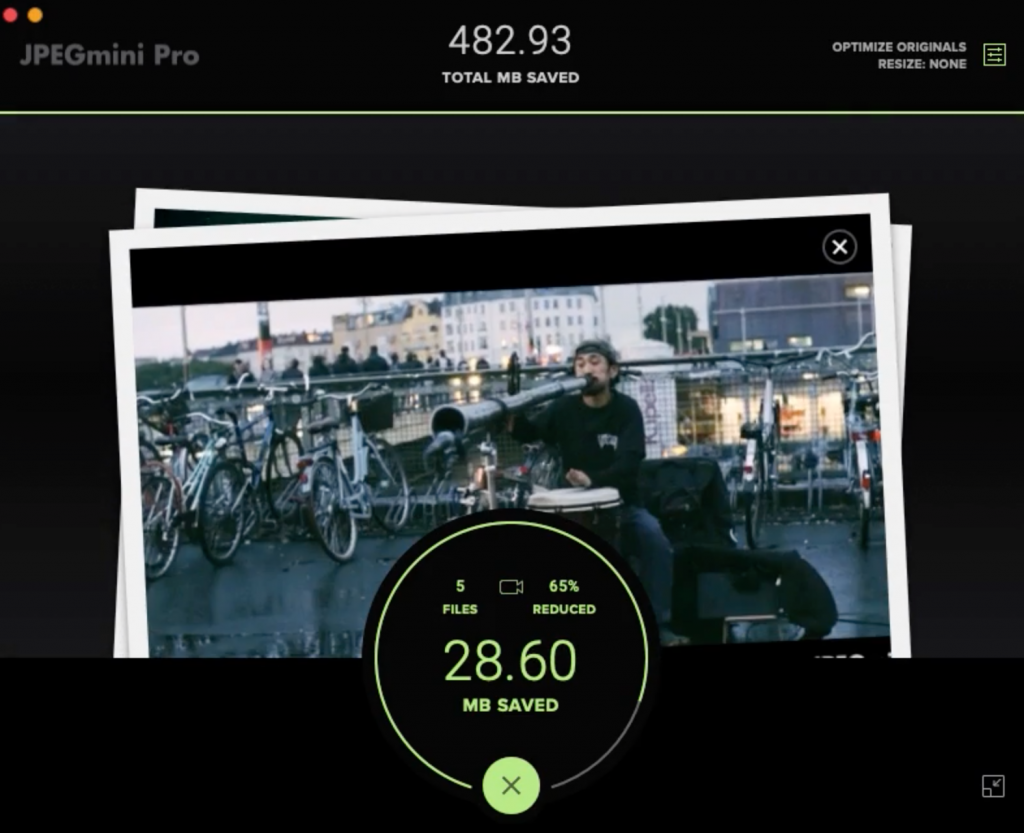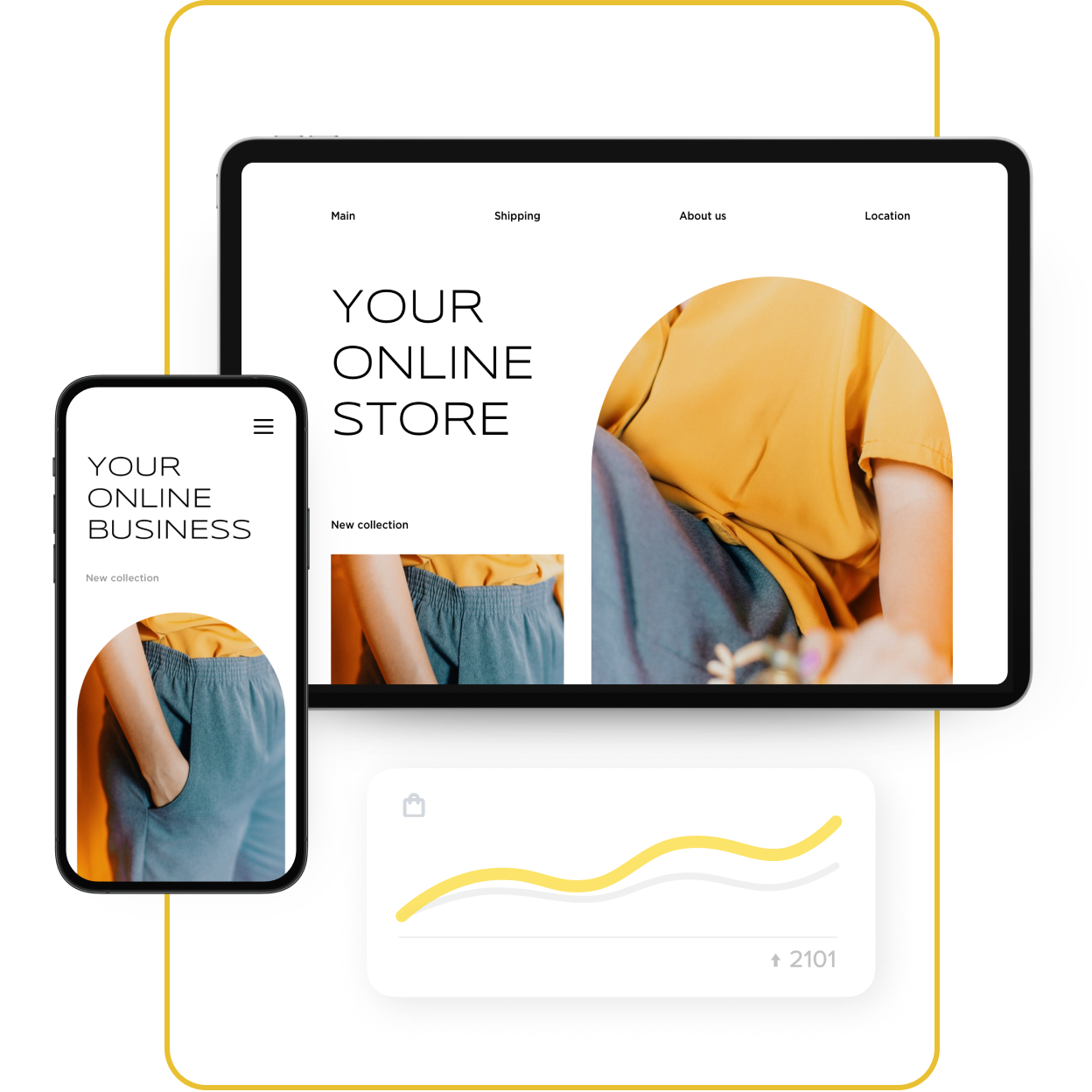Product images help seal the deal when customers visit your website. To maintain their interest, you must have attractive photos that load quickly. In other words, you need to optimize your product images.
You may be wondering how to find the optimal image size, how to compress images, and how to optimize images without losing quality.
We’ve got you covered. In this article, we get into the
Why Do You Need to Optimize Images?
Images are an important part of every website. This is especially true for an ecommerce site. Pictures influence customers when they’re considering buying something. They add to the overall design of the webpage, help customers choose a product, and improve your site’s SEO.
For example, you want to avoid uploading large files. They can slow down your page, which affects your search engine ranking and drives away potential customers. No one wants to wait around for a page to load while shopping online. That’s why you must optimize your product images.
Understanding the Image Dimensions and Proportions
Let’s find out what you need to pay attention to when optimizing your images.
An image’s size and dimensions are really important. These parameters affect the file size and the image’s appearance on different devices.
Size
Now is the era of
However, when images are too big, they are not suitable for the Internet. They slow down the loading speed, especially on a phone. If you don’t want your visitors to become impatient and leave your store, you should reduce the size of your pictures.
An image has two sizes:
- Image size is the space a graphic occupies on the screen. This size is measured in pixels (px), which are the individual points that make up the screen. You can upload images of any size on the Ecwid store. They are then optimized to fit the width of the browser window. Even so, it’s best to reduce your product images to about 1000 x 1000 px. That size is large enough to display the product and small enough to load quickly.
- File size is the memory space that the image takes up. This size is measured in bytes, typical
Kilo- (Kb),Mega- (Mb), and Gigabytes (Gb). The larger the file size of the image, the more storage space it requires.

This product image’s size is 1920×1920 and its file size is 272 kB
Bigger files take longer to load. File compression software was developed to combat this issue. A picture is typically compressed by optimizing the color data.
However, strong compression degrades the “quality” of images. It causes noise or an abrupt color transition.
For a file size of about 1000 px, a good compression will take up around 200 kB.
Now let’s learn more about how to choose the right proportions for your pictures.
Proportions
The proportions of an image indicate the
Some ratios are more pleasing to the eye than others. The standard set of proportions always look nice. These are 1:1, 4:3, 3:2, and 16:9.

The proportions are important as they help define the look of your site. Strive for the same proportions for all your product images to give your storefront a structured and professional look.
How to Select Image Format
Another thing to keep in mind for optimal imaging is image format. It is the type of file in which an image is saved.
There are many types of image formats. Each has its advantages and disadvantages in terms of quality, compression, and support. You should select the format that provides the highest quality with the smallest size.
The three most common formats on the web are JPEG, PNG, and GIF. Each should be used in a specific way.
Let’s break down the formats:
- GIF (Graphics Interchange Format) is capable of storing compressed data without loss of quality using no more than 256 colors. The format typically supports animations. For a long time, GIFs were the most common format on the Internet… until PNG came along.
- PNG (Portable Network Graphics) uses lossless compression and stores an unlimited number of colors.
- JPEG (Joint Photographic Experts Group, the name of the developer) is the most typical format for storing photos and other images. The JPEG algorithm can use both lossy and lossless compression (more on that later.) The larger the file size, the smaller the loss.
Which format should you choose? If you have an animated picture, that’s
JPEG and PNG files are similar, but they also have crucial differences. JPEGs are smaller in size because they use a compression process that removes some data. PNGs, on the other hand, support transparent backgrounds and are better for graphic design.
The general rule is to use JPGs for photographs and images that don’t have a transparent background. As for PNG, it’s better to use them for graphics, files with transparent backgrounds, and other images where clarity and color vibrancy are important. So for product photos, it makes sense to prefer JPEG to PNG.

This product photo is in JPEG format
How to Compress Images Without Losing Quality
Compression helps reduce the size of an image. The lower the quality, the higher the compression, and the smaller the file size.
There are two types of compression:
- Lossy compression reduces the size of a file by removing redundant data. However, when you compress a file in this way, it can significantly degrade the image quality.
- Lossless compression is a technique that keeps the quality of a file high. However, it won’t reduce the file size as much as lossy compression. If you need to reduce file size without noticeably affecting quality, it’s better to choose lossless compression.
Read on to learn about online tools you can use to compress an image without quality loss.
How to Optimize Images for the Web: Tools Overview
Want to figure out how to optimize images for a website? Lucky for you, you use online tools to optimize your images automatically without spending hours watching Photoshop tutorials.
The following sites can automate optimization for you:
How to Optimize Image Size: 4 Simple Tools
If you’re looking for a file size reducer, check out one of the following services. They are either free or have free trials:
- TinyJPG: it reduces the file size of JPEG images. According to their site, it can reduce it by more than 70%!
- TinyPNG: the same picture compressor but for PNG files.
- Squoosh: an image compressor web app that reduces image sizes through numerous formats.
- JPEGmini: a photo compressor for JPEG files. It has more advanced features that are helpful for photographers, including exporting photos directly from Lightroom and Photoshop.
- ImageOptim: an image optimizer for Mac devices. You need to download it to use.

Optimizing images with JPEGmini
If you run an Ecwid store, you can use the SEO speed & image optimizer app from the Ecwid App Market. The app allows for
How to Optimize Images for WordPress
If you have a WordPress website, you can use an image optimizer and compression plugins. They help you automatically optimize images in WordPress sites, allowing for better speed and performance.
By the way, if you’re looking for an ecommerce plugin for your WordPress website, check out this Ecwid by Lightspeed plugin. It allows you to easily add an online store to your WordPress site. Once installed, the plugin automatically creates a Store page where your customers can shop on your website.
EWWW Image Optimizer
EWWW Image Optimizer is one of the best WordPress plugins to compress photos and optimize images on your website. The entire process of optimizing images is automated. This includes compressing images and scaling to fit the right size page and device. The plugin is
Compress JPEG & PNG
Compress JPEG & PNG is a plugin created by the team behind the services we’ve already
reSmush.it
reSmush.it is a free WordPress image compression plugin for files up to 5MB. You can automatically optimize images on upload, bulk optimize older images, and exclude some pictures from the optimizer.
More Automated Image Optimization Tools
But what if you don’t have a WordPress website? Manually optimizing a large number of photos is definitely
ImageRecycle
ImageRecycle supports various image formats, such as JPEG, PNG, GIF, and even PDF files.
The tool can determine which images on your website need to be optimized based on the image size and dimension. Just enter your website address and ImageRecycle will send you a free report via email. They have a free trial too so that you can see their optimization tool in action.
ImageKit.io
ImageKit.io is not a regular image compressor but an image CDN (content delivery network). It optimizes, resizes, and sends images through its global network of servers. You can sign up for a forever free plan.
Tools for Editing Product Images
If you don’t mind editing pictures yourself and aren’t afraid of a little DIY, you may find tools for photo editing helpful. Here are some of them:
Photoshop
Photoshop offers a free online editor for basic image manipulation (such as cropping or resizing images). It also allows you to remove background from pictures and finetune your photos with different settings such as contrast, brightness, saturation, warmth, or sharpening.

Online Photoshop editor has design templates you can use
GIMP
GIMP is a free program suitable for Windows, Mac, and Linux. It offers everything you need for professional graphics and photographs, including tools for layers and masks, color correction, retouching, and painting. GIMP supports all major image file formats.
PicMonkey
PicMonkey is an online editor with a simple interface and all the basic functions, like cropping, rotating, sharpness control, working with color, and choosing resolution photos. It provides templates for creating images for ads, social posts, logos, infographics, and more. It has a
Pixlr
Pixlr offers a free online editor and design resources for beginners and professionals. It has tools for color, drawing, and photo editing. With Pixlr, you work with layers and use different effects and filters. If you’re interested, you can
More about Image Optimization
Large images can slow down your website, so it’s important to optimize them for the web. Finding the right image format for your pictures by resizing and compressing can work wonders for your website speed load.
And now you know the good news: optimization is super easy to do! You can also come back and reference this article whenever you need.
If you’re a more advanced user and eager to learn more about how to optimize images for SEO, we recommend watching this video by Google. It goes through some advanced tips on optimizing your images for a website. Watch it here:
No matter how experienced you are as an ecommerce owner, never forget about image optimization. Even the simplest tools can make your pictures suitable for the web. By optimizing your pictures, you can drastically influence your customers’ shopping experience. Make sure your product images are both beautiful and quick to load!
If you’re just at the beginning of your ecommerce journey and need to create an online store, check out Ecwid by Lightspeed. It allows you to set up an online store yourself, no coding or design skills needed. Perfect if you need to start selling online as soon as possible!








